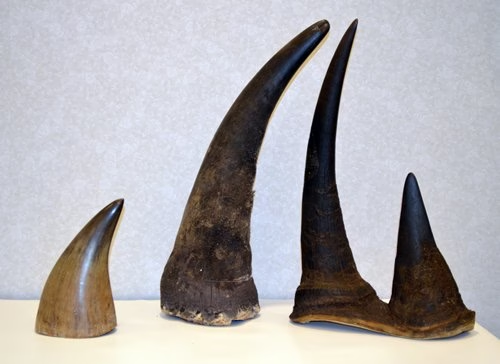The discovery of a major wildlife trafficking shipment in Singapore has once again drawn attention to the escalating global trade in rhinoceros horns, revealing how criminal networks continue to exploit air freight systems across continents. Ten days ago, a cargo handler in Singapore noticed an unusual smell coming from a package declared as furniture components, a moment of instinct that would lead to the country’s largest rhinoceros horn seizure to date.
Suspicious Odour Leads To Massive Discovery
Authorities later confirmed that the handler had acted after he
“detected a strong odour”
coming from the cargo. What followed was a coordinated response involving Singapore’s National Parks Board and air cargo operator SATS, who jointly inspected the shipment. Officials uncovered a carefully concealed stash hidden within air freight that had originated in South Africa and was bound for Laos.
Largest Rhinoceros Horn Haul Ever Recorded In Singapore
In their joint briefing, officials announced that they had discovered
“20 pieces of rhinoceros horns weighing 35.7kg along with around 150 kg of other animal parts”
. They further emphasised that
“This marks the largest seizure of rhinoceros horns in Singapore to date”
.
The 20 horns, weighing a total of 35.7 kilograms, were identified as originating from white rhinoceroses native to South Africa. The entire haul is believed to be worth approximately 870,000 United States dollars, equivalent to around 15 million South African rand. Investigations into the remaining animal parts are ongoing as officials attempt to trace their exact origin.
Smugglers Use Increasingly Elaborate Cover Stories
The shipment had been labelled as
“furniture fittings”
, a tactic frequently used by traffickers attempting to evade detection. Officials have noted that smugglers are employing increasingly sophisticated concealment methods, often relying on transit hubs with high cargo volumes to obscure their activities.
International Protections And Mandatory Destruction
Rhinoceros species are protected under the Convention on International Trade in Endangered Species, commonly referred to as CITES, which bans all commercial trade in rhino horns. In line with those regulations, Singaporean authorities confirmed the horns will be destroyed, noting that their disposal will follow strict CITES procedures.
Persistent Demand Continues To Fuel Black Market
Demand for rhinoceros horn remains strong in several parts of Asia, where it is often treated as a luxury symbol or promoted as a traditional remedy. The material is commonly carved into decorative objects such as buttons, jewellery, belt buckles and personal items. Despite extensive public awareness campaigns and widespread crackdowns, traffickers continue to exploit both economic disparities and high black market prices.
Growing Concern Over Trafficking Routes Through Southeast Asia
The latest seizure adds to concerns that Southeast Asia is increasingly being used as a transit hub by traffickers transporting wildlife products from Africa to other parts of Asia. Conservation groups warn that without sustained international cooperation and tighter cargo monitoring, criminal networks will continue to exploit logistical loopholes.
The last major rhino horn interception in Singapore occurred in October 2022, when authorities discovered 34.7 kilograms of the illicit material in the luggage of a South African traveller passing through Changi Airport. The man was later handed a two year prison sentence in January of the following year.
According to the International Union for Conservation of Nature, based in Switzerland, poaching and the underground trade in rhinoceros horns have shown signs of decline in recent years, yet they continue to pose severe and persistent risks to the species. The organisation reported that more than 2,700 rhinoceroses were poached across the African continent between 2018 and 2021. South Africa accounted for roughly 90 percent of those killings, with the majority taking place in the Kruger National Park.
With nearly four fifths of the global rhinoceros population residing within its borders, South Africa remains the epicentre of poaching activity, largely fuelled by sustained demand originating from parts of Asia.
The unintended contribution of an alert cargo handler has prevented a haul of significant financial value from reaching the black market, but the incident underscores the scale and complexity of wildlife trafficking operations that continue to threaten already vulnerable rhinoceros populations across the African continent.
















